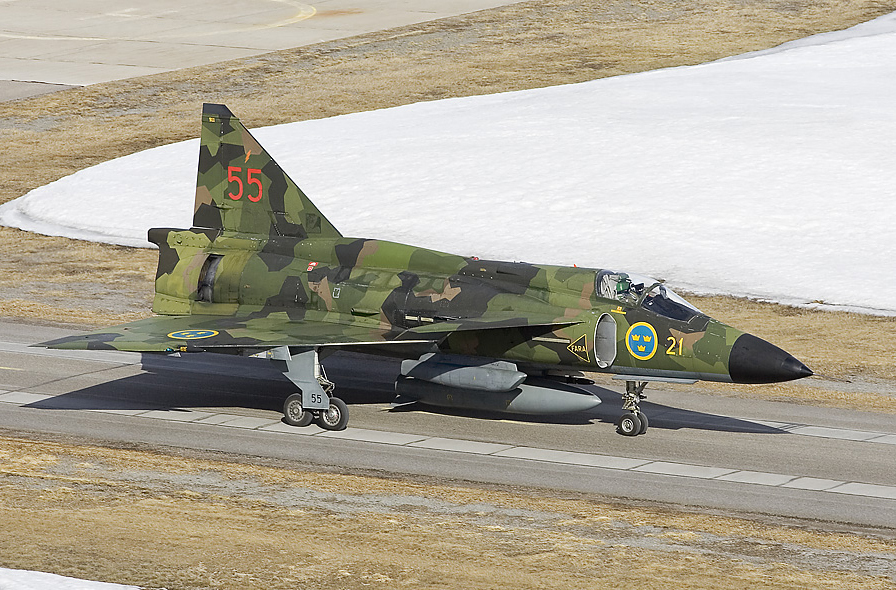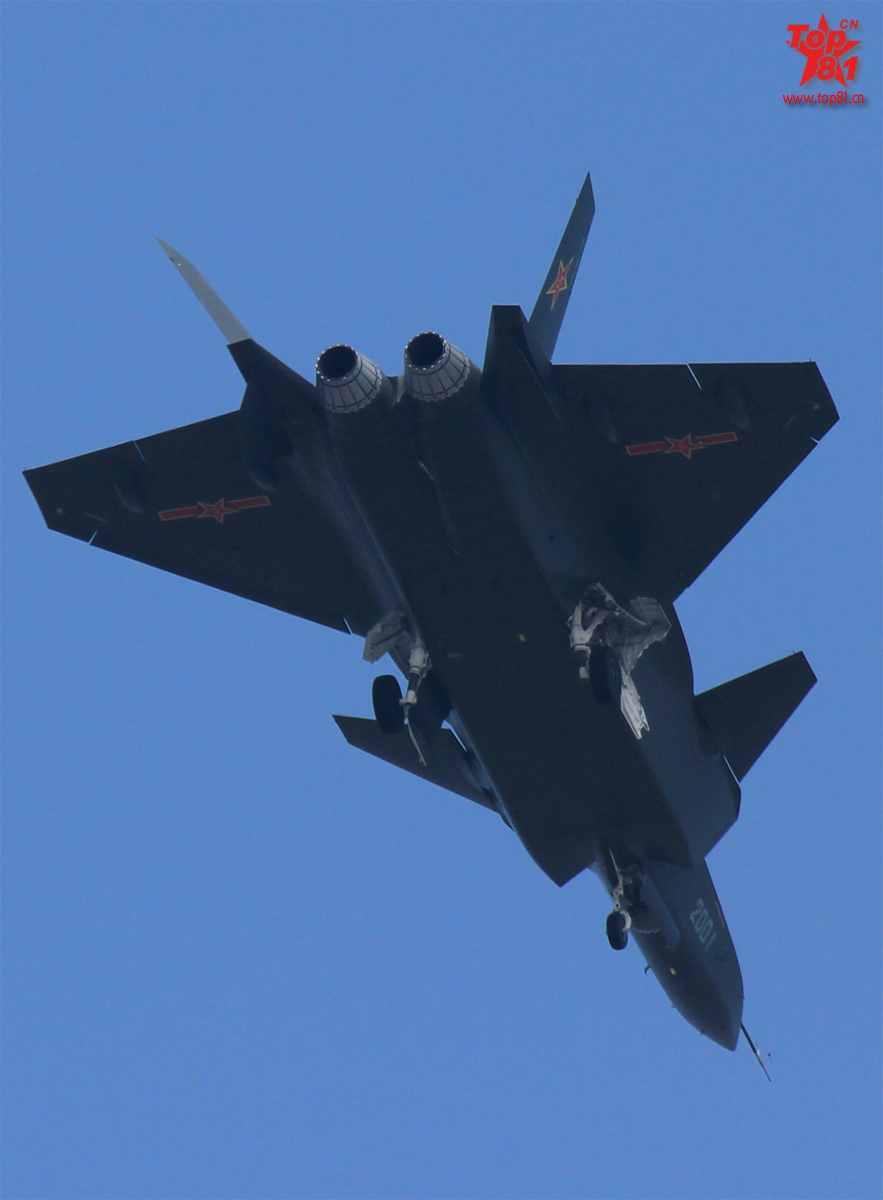My understanding is he's using the position of wheels to make his claims, which is explicitly the center of gravity, and not center of lift.To be fair, MiG-29 isn't confusing center-of-lift and center-of-gravity either. What he is doing is trying to confuse the concepts of center-of-lift for the wings and center-of-lift for the entire aircraft, the two being two separated concepts.
You are using an out of date browser. It may not display this or other websites correctly.
You should upgrade or use an alternative browser.
You should upgrade or use an alternative browser.
J-20... The New Generation Fighter II
- Thread starter Asymptote
- Start date
- Status
- Not open for further replies.
MiG-29
Banned Idiot
yes i am MiG-23MLDHow do you know it won't use 3d tvc nozzles?
And j-20's rcs is greater than... What exactly? F-22 Pak fa? F-35? I'd wager against the latter two quite strongly if that were the case.
Yes.
Larger -- not by much, and that's not necessarily a detriment.
Heavier -- again if they can match 20 year old materials tech.
Less powerful engines -- I'll have to check figures for WS-15 and f119 again but they should be similar.
Larger ir and radar signatures -- the former I would agree with at this point until we see the WS-15. As for rcs, if the materials tech is comparable then I amateurishly claim there should be no significant differences. Not like the pak fa and f-35 at least.
I'm sorry your credibility just flew out the window and imploded for good measure. First the j-20 isn't that much bigger than f-22, second and more importantly, by your logic lca tejas has one over the f-16 cause it's a bit smaller and slightly harder to spot??
---
Pardon me but are you the same person as mig-27mld over at defencetalk?
but i will say two small details you have forgotten, first the F-22 does not use 1990s construction technics, it does use modern technology, the F-22 has have upgrades, second you have to prove they have engines now of 18000kg of thrust or at least in 2017 they will be available for production series
yes i am MiG-23MLD
but i will say two small details you have forgotten, first the F-22 does not use 1990s construction technics, it does use modern technology, the F-22 has have upgrades, second you have to prove they have engines now of 18000kg of thrust or at least in 2017 they will be available for production series
The plane is still the prototype phase for heaven's sake. Also keep in mind PLA's military secrecy policy. I don't think the numbers will leak out until the plane enters service.
Engineer
Major
My understanding is he's using the position of wheels to make his claims, which is explicitly the center of gravity, and not center of lift.
No, location of landing gears is not the same as the location for center of gravity. Location of landing gears need to lie behind the center-of-gravity. However, the distance between the landing gears and c.g., and the location of center-of-lift is unknown. So, the statements he made cannot be backed up.
MiG-29
Banned Idiot
i am not confusing niether concepts, but you fail both of you to understand relaxed stability and the concept of highly loaded canard, the J-10 by the virtue of being unstable has a lightly loaded canard, while the AJ-37 a highly loaded canard because it is stable.My understanding is he's using the position of wheels to make his claims, which is explicitly the center of gravity, and not center of lift.
the AJ-37 then has a lift canard to balance the pitch down tendency, while the J-10 has a pitch up tendency, the wing position with respect the center of gravity will determine the longitudinal stability and therefore the landing gear is a good indicator of the center of gravity
the J-20 is closer to the Viggen than to the J-10
Last edited:
Engineer
Major
i am not confusing niether concepts, but you fail both you to understand relaxed stability and the concept of highly loaded canard, the J-10 by the virtue of being unstable has a lightly loaded canard, while the AJ-37 a highly loaded canard because it is stable
You have no idea what the load of the canards on either plane is. As far as stability is concerned, the problem lies with you because you cannot prove that center-of-gravity is ahead of aerodynamic center on the J-20. And by aerodynamic center, I am referring to the aerodynamic center for the entirely plane.
I really wish someone could do a translation of Dr. Song Weng Cong's paper. It will help answer a lot of questions here regarding J-20's airframe.
MiG-29
Banned Idiot
You have no idea what the load of the canards on either plane is. As far as stability is concerned, the problem lies with you because you cannot prove that center-of-gravity is ahead of aerodynamic center on the J-20. And by aerodynamic center, I am referring to the aerodynamic center for the entirely plane.
i can see easily what you do not want to see, the main wing is too aft to give it a highly unstable configuration like in the case of the LCA or Mirage 2000, then the canard is highly loaded, a highly loaded canard can not be used as much as trim devices then you need to use the V tail and wing flaps.
in order to keep the wing balanced it needs big canards that increase drag and kill lift to the main wing, any way the canard is not as big as the wing so hardly it will make it unstable.
The J-20 is quit similar to the Viggen in terms of stability but it uses the V tails as pitch control that is why you see it in landings deploying the V tails
note the position of the LCA landing gear

now look at the viggen and J-20`s


Last edited:
Engineer
Major
A more accurate description is that you are seeing only what you want to see. What determines the longitudinal stability is the aerodynamic center for the aircraft. The aerodynamic center for the wings by itself means absolutely nothing. And the reason I say you are seeing only what you want to see is because you are cherry picking the wing's aerodynamic center as the sole influence on stability while completely ignoring the effects of canards on the position of the aerodynamic center.i can see easily what you do not want to see, the main wing is too aft to give it a highly unstable configuration like in the case of the LCA or Mirage 2000, then the canard is highly loaded, a highly loaded canard can not be used as much as trim devices then you need to use the V tail and wing flaps.
This is not a support for your conclusion that the aerodynamic center is aft of the landing gears. Rather, it's just a reworded version of your original statement in disguise, which still has no proof to back it up.in order to keep the wing balanced it needs big canards
No. The canards themselves provide lift, unlike traditional tails that receive downwashed from the main wing which kills some of the lift. There is no indication that canard increases drag. Canards allow the vortices going over the wings to be controlled, thus enhancing controllability of the entire system.that increase drag and kill lift to the main wing
Canards do not have to be as big as the wings if the moment arm of the canards are longer. Stability in the longitudinal axis is determined by the overall aerodynamic center for the aircraft, and as long as it is ahead of the center-of-gravity, the plane is unstable.any way the canard is not as big as the wing so hardly it will make it unstable.
Pitch control on the J-20 is provided by both canards and V-tail, as evident from the pictures.The J-20 is quit similar to the Viggen in terms of stability but it uses the V tails as pitch control that is why you see it in landings deploying the V tails
Last edited:
yes i am MiG-23MLD
but i will say two small details you have forgotten, first the F-22 does not use 1990s construction technics, it does use modern technology, the F-22 has have upgrades, second you have to prove they have engines now of 18000kg of thrust or at least in 2017 they will be available for production series
Okay first point -- when I said "technology twenty years ago" I meant "top of the end" technology twenty years ago. And that equates to the F-22 for the purposes of this discussion.
Second point -- impossible to prove but that's what most of us are assuming from what we've heard.
- Status
- Not open for further replies.
